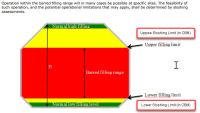LNG Vessel file - Upper and Lower Sloshing Limits fields ( to define Ballast and Laden condition)
As part of GHG CO2 Shipping emissions reporting, it is important to be able to accurately calculate the transport work of each leg of a voyage. In particular, in the case of an LNG vessel there is always LNG cargo quantity onboard for the vessel to perform the necessary functions for her seaworthiness as well as for other standard functions such as heel and cool down. The way to accurately define when an LNG vessel is in Ballast or Laden condition, is to check its LNG cargo Onboard quantity (CBM) and compare it with with her Lower Sloshing Limit value (CBM). The Lower Sloshing Limit, and the Upper Sloshing Limit, are part of the specifications of every LNG vessel; once the LNG Onboard Quantity is below the Lower Slowing Limit of the vessel, then the vessel's condition is considered Ballast. This needs to be a user entry field, available in the Vessel File, when the Vessel Type is "L-LNG". Upper and Lower Sloshing Limits shall be available in the Report Designer too.
